This Week, the students have been introduced to the story of being and becoming human. The scientific story of human evolution. Humans have always been curious to identify who they really are which poses questions like; how and why are we different from other mammals? What made us develop distinct traits like bipedality and bigger brains? Where did we come from? Among other questions. Paleoanthropologists have been trying to answer these questions by searching for fossil evidence in order to reconstruct human lineages. This is perhaps the most notoriously difficult task that scientists have ever embarked on since there is no enough fossil evidence and therefore only inferences can be made with little or no conclusions to be derived from them with reference to human origins. For instance, although there is fossil evidence of bipedality in early human ancestors such as in Autralopithecus afarensis, there is still a debate on why and how bipedality evolved in humans (shift to savanna? hands to carry? Threat and defence? Thermoregulation?) Therefore, more intensive paleoanthropological research is required if scientists are to form a complete picture of human origins and evolution through time.
In the Turkana Basin, fossils have been uncovered of Australopithecus anamensis, Australopithecus afarensis, Kenyanthropus platypus, Paranthropus boisei, Homo habilis, Homo rudolfensis, Homo erectus, and Homo sapiens.
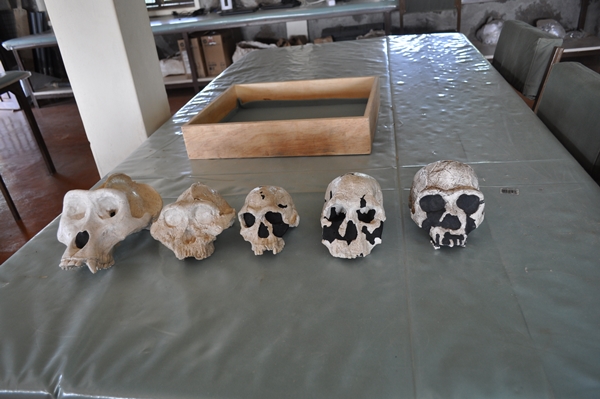
casts of some of the hominid fossils crania compared to a gorilla one on the left (Photo: Lucy)
In order for the students to gain a better understanding on the morphological characteristics of the human ancestors presented by the available fossil evidence, Dr. Bill Kimbel led them in a discussion which involved pointing out differences on fossil casts and trying to figure out their order of progression towards becoming more human like.

Dr. Kimbel leads the discussion on human evolution as presented in the fossil evidence
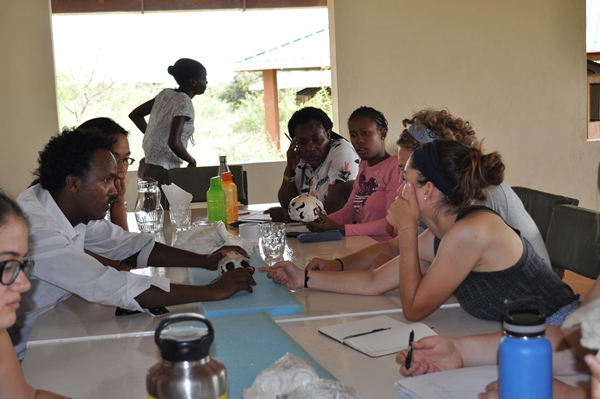
Kifle and Lydia discuss morphogical characteristics on a hominid cast
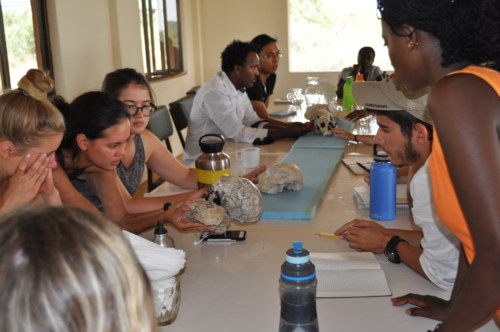
Regina examines a hominid cast (Photo: Lucy)
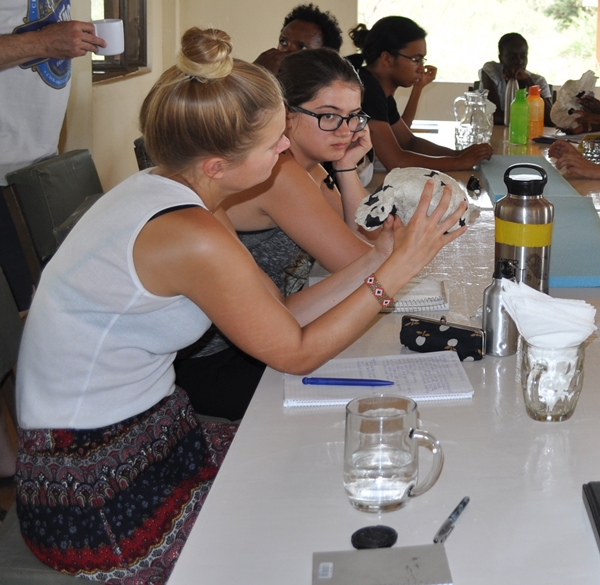
Ulla examining a cast for distinct morphological features

Rohan demonstrates heel strike and toe-off as seen in bipedality during discussion
On Thursday, we headed out to Area 8B, an early Pleistocene site, where we had gone fossil hunting previously in the Paleontology Module. Here the students learnt the Koobi Fora Research Project fossil collection protocol from Martin the TBI chief curator and Deming. Before lunch on the same day, the students got a chance to watch the documentary ‘Dicovering Ardi’ which perhaps emphasizes above anything else, the intensive work that paleoanthropologists engage in from the fieldwork hunting for fossils to preparing them back in the lab before they study them. A long process which requires a lot of effort as well as patience if they are to be successful at all.
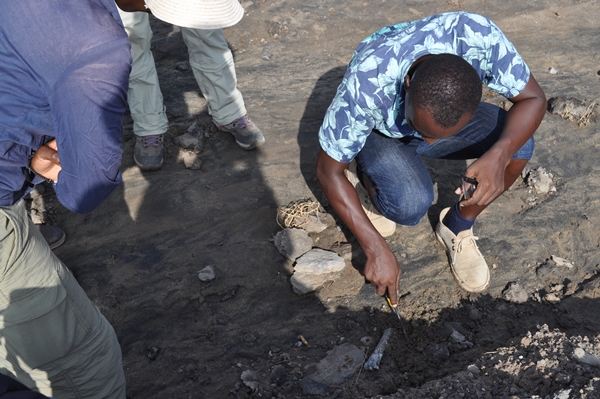
Martin Demonstrates how to excavate without damaging fossils
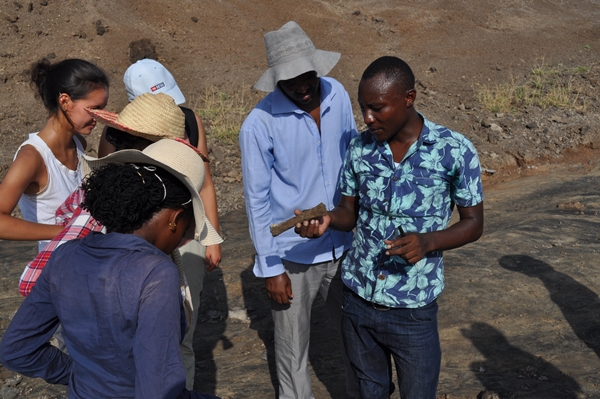
The equidae metacarpal after excavation
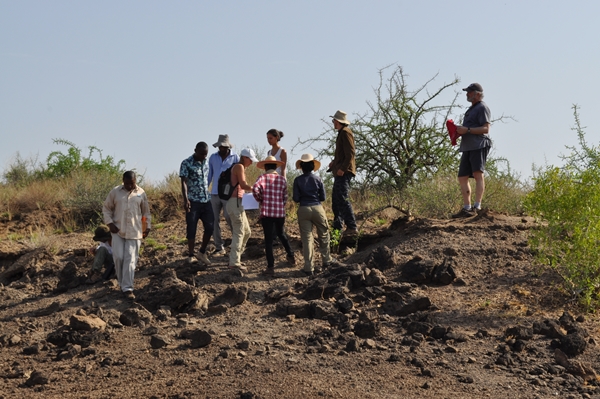
students examining a sandstone bed for collection data
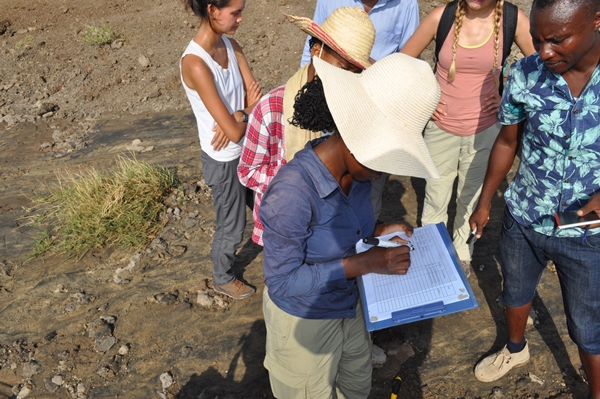
Ann records collection information (Photo:Lucy)
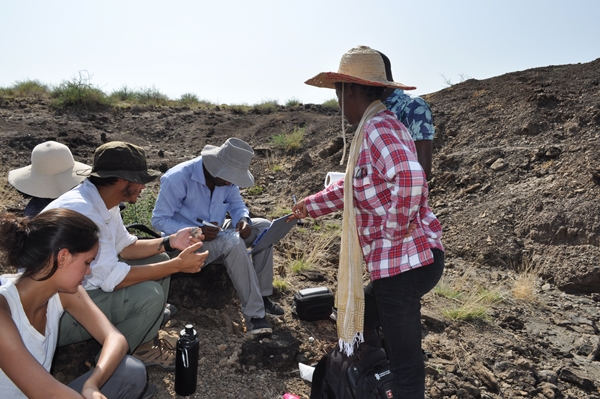
Kifle learns how to preperly bag a collected fossil (Photo: Lucy)
At dinner, the kitchen staff surprised the students with a cake to celebrate International Womens Day.
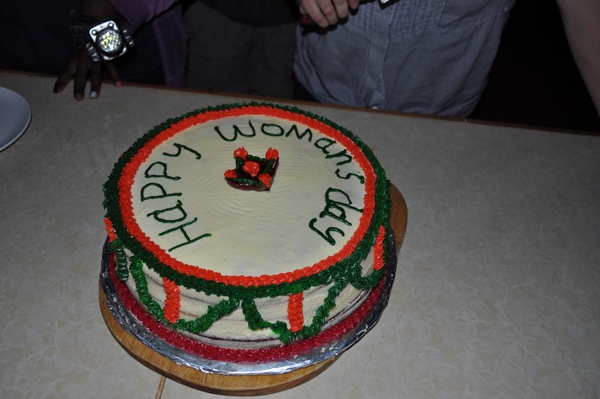
The surprise cake from the kitchen staff
In the coming week, the students will continue to delve deeper into understanding human origins by identifying possible research questions and offering possible scientific solutions for a better understanding of human evolution.





